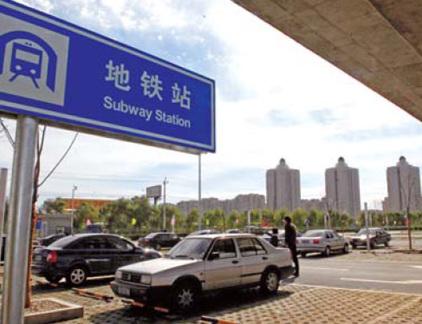 A parking lot out of the Tiantongyuan subway station. [CHEN BIN / FOR CHINA DAILY]
A parking lot out of the Tiantongyuan subway station. [CHEN BIN / FOR CHINA DAILY]
Beijing will introduce a new transfer model to ease commuting pressures by building 12 parking lots along the five subway lines that will open by the end of this year.
According to the plan, the parking lots will be mainly located around subway stations in the rural-urban fringe zones. No lots will be built within the Fourth Ring Road.
The Beijing Municipal Commission of Transport released the news on Saturday in response to suggestions by Shi Xiangyang, a Chinese People's Political Consultative Conference Beijing committee member.
The city has opened nine subway lines so far, bringing a surge in ridership. But, disappointing to many, no parking lots have been built around the subway stations to alleviate the overcrowded traffic conditions, said Shi.
This "park-and-ride" model will help divert some of the huge passenger flow during rush hours by allowing passengers to transfer to cars they have parked near those newly built stations, officials said.
The move aims to improve the poor links between road and underground transportation in the capital.
The parking lots, with up to 5,000 spaces each, will open in conjunction with the new rail lines. Multistory parking lots will be built near some of the subway stations because of limited land.
At least 3,000 parking spots will also be allocated for bicycles around all subway stations in the next five years, said Li Jianguo, deputy director of the transport commission.
He said each subway station would have at least one bicycle parking lot nearby; moreover, similar parking lots will also be built near major bus transfer stops and pivotal bus terminals.
Whether those lots will be used to provide passengers with bike rental services or just bike storage spaces has yet to be determined.
The initial bicycle transfer lot will be built in the northern section of Line 4, covering the area between the subway stations of the Summer Palace and the National Library.
The practice will soon be expanded to cover more major blocks by 2012.





